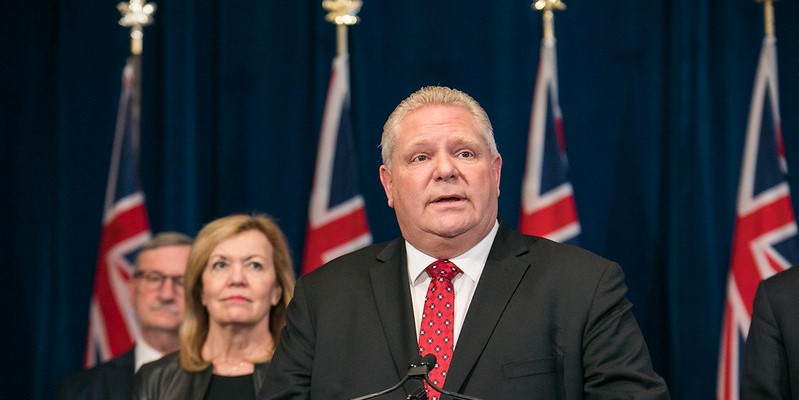Ontario government’s failure to restrain spending undermines ‘fiscal foundation’

Before releasing Ontario’s fall fiscal update on Thursday, provincial Finance Minister Peter Bethlenfalvy said the Ford government would lay a “strong fiscal foundation for future generations.” In reality, due to the government’s spending increases and significant debt accumulation, provincial finances continue to sit on shaky ground.
It didn’t have to be this way. Prior to the fall update, provincial finances looked somewhat promising. The government expected a small deficit of $1.3 billion for 2023/24 before returning to surpluses for the next two years. Consecutive surpluses would’ve been a welcome change, as the province has run deficits every year since 2007/08 (except for 2021/22). Surpluses would’ve also helped allow the government to either reduce debt or provide meaningful tax relief for Ontarians.
But these goals hinged on the Ford government’s ability to restrain spending—something it’s rarely done.
For example, in 2021/22 the province experienced higher-than-expected revenues and subsequently ran a $2.0 billion budget surplus. But rather than capitalize on the windfall and post a significantly larger surplus, thus reducing its debt load, the Ford government chose to increase spending and plunge deeper in debt. In fact, under Premier Ford, annual growth in per-person inflation-adjusted spending has averaged 2.4 per cent—roughly six times the rate of spending growth under Kathleen Wynne.
Then on Thursday, rather than break from old habits, the government once again chose to increase spending and borrowing, now and in the future.
As a result, according to the government’s new projections, the deficit in 2023/24 will be $5.6 billion—quadruple what the government projected in the budget less than nine months ago—due primarily to $2.3 billion in new spending, mainly for the province’s new “Infrastructure Bank,” and lower-than-expected revenues due to poor economic growth. And the government now forecasts a $5.3 billion deficit for 2024/25 (the previous estimate was a $0.2 billion surplus) and a much-reduced $0.5 billion surplus for 2025/26.
Again, despite what Minister Bethlenfalvy told Ontarians, these changes don’t lay a “strong fiscal foundation for future generations.” In fact, it’s the opposite.
Deficit spending is a way for governments to pass the tax burden of today’s spending onto future generations because debt incurred today will likely be paid through higher taxes in the future. In other words, by increasing spending and accumulating more debt, the Ford government is raising taxes on future Ontarians.
Over the three-year period from 2023/24 to 2025/26, the Ford government expects to add roughly $48.7 billion in debt—$14.0 billion more than the government forecasted in March. This will increase the province’s net debt to $449.1 billion in 2025/26 or $26,688 per person (adjusted for inflation). While future generations will ultimately pay this debt, it also imposes costs on Ontarians today.
Just like when a family takes out a loan, when governments take on debt they’re responsible for paying interest on that amount. For 2023/24, the Ontarian government will pay an estimated $13.4 billion in debt interest costs. This translates to more than $1.0 billion every month, paid for by Ontarian taxpayers, that’s unavailable for health care, education or tax relief.
The Ford government has not laid a strong fiscal foundation for future generations. Rather, this government’s failure to restrain spending will impose real costs on Ontarians today and in the future.
Authors:
Subscribe to the Fraser Institute
Get the latest news from the Fraser Institute on the latest research studies, news and events.


